by Jill & Sarah | Feb 15, 2020 | 2nd/3rd Grade News
La Lectura
We continued our verb study this week with the 1st person plural: Nosotros -We. Students conjugated several AR/ER/IR verbs into the Nosotros form. They then wrote sentences in their journals and did a great job!
During our daily readings the students continued to identify the subject and predicate of sentences. They are starting to make the connection between noun -verb agreement and then use this in their own writing and speaking. I see/hear them catching themselves and doing a quick self-correct.
I did show the class how they should go back and find answers within a story. I showed them how to do this on the computer stories too.
-
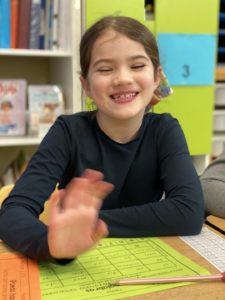
-
Making words from Centesimo Dia
-
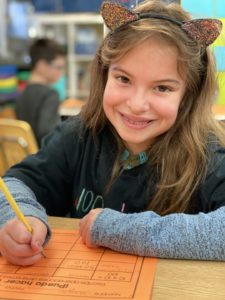
-
Ways to form 100
-
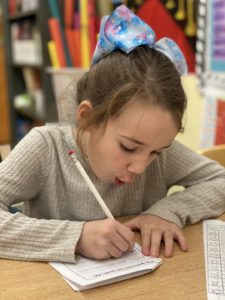
-
Writing all about 100
-
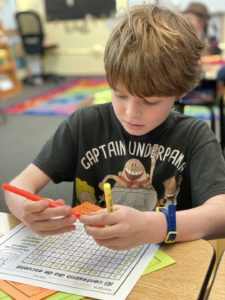
-
100 day word search
-
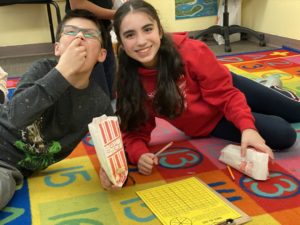
-
Multiplication race to 100 (and popcorn!)
-
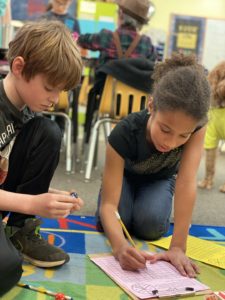
-
Multiplication: race to 1,000!
-
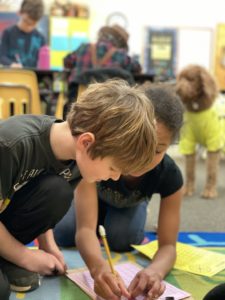
Las matemáticas
- 7.3 Multiplying with Ones, Tens, & Hundreds with Regrouping
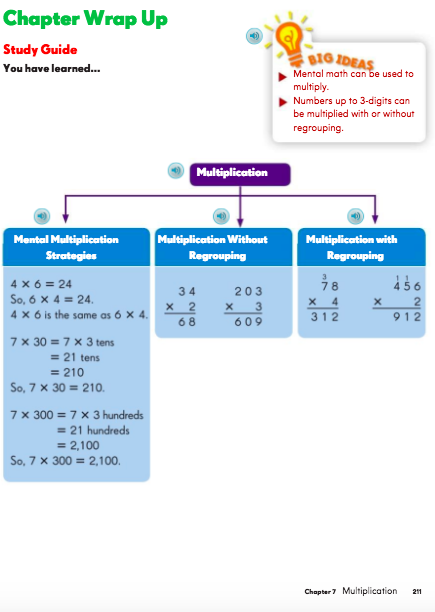
Science
What a treat we had this week with the Reptile Man´s visit! I hope your student came home with lots of stories and facts about the slithery friends they met on Tuesday.
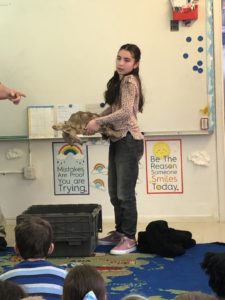
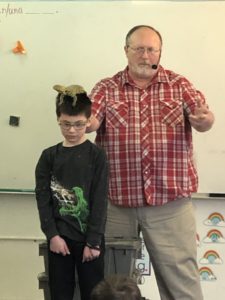
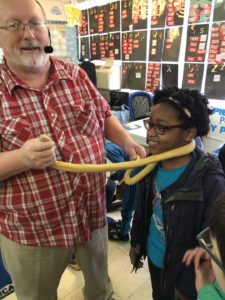
We spent this week reviewing information from our Animal Classification Unit.
History & Geography
We are continuing to work on our reports and I continue to be pleased with the students´ progress.
We also did some review of our Earliest Americans unit.
English Spelling: With back to back short weeks and a couple of fun days in the mix, we will all have our next spelling test on February 21st.
by Jill & Sarah | Feb 8, 2020 | 2nd/3rd Grade News
La lectura
The students are really starting to see how verbs work in Spanish! I am seeing the lightbulbs go off as understanding flashes! This week our objectives were:
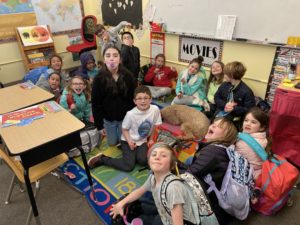
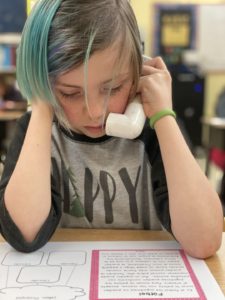 Conjugate verbs into the 3rd person singular, present tense.
Conjugate verbs into the 3rd person singular, present tense.- Write sentences in 1st, 2nd and 3rd person.
- Identify the subject and predicate of sentences.
- Read to self (whisper phones).
- Identify the main idea of a story.
- Identify supporting details in a story.
Las matemáticas
Our Unit 7 is all about multiplication. Big Idea: Mental math can be used to multiply. Numbers up to 3 digits can be multiplied with or without regrouping.
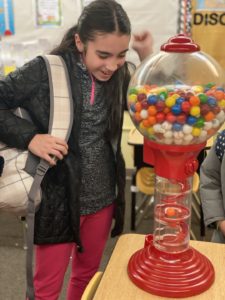 Multiply ones, tens, and hundreds mentally.
Multiply ones, tens, and hundreds mentally.- Students use skip-counting by 2 through 10 to multiply ones, tens and hundreds mentally.
- Students use base-ten blocks and place-value charts to multiply ones, tens, and hundreds with or without regrouping.
- Understand the Commutative Property of Multiplication
- Students multiply by ones, tens, and hundreds mentally
- Multiply 2- and 3-digit numbers by a 1-digit number with or without regrouping
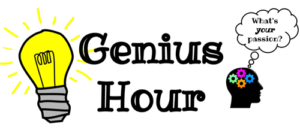
This week we continued with Step 3: Make a preliminary plan by listing steps they plan to take to complete their investigation. We also created a google document for our Genius Hour projects. This way each student can take notes at school and have access to those notes at home. Some computer skills we worked on with our projects this week:
- Creat a document.
- Name a document.
- Copy and paste.
- Copy a URL (for citing purposes) and create a link in the google doc.
- Two fingered (right-click) click to open up new menus.
Next week we will work on adding accents!
 All students successfully logged into their Google accounts and are excited about their new email! Here are the guidelines we discussed in class:
All students successfully logged into their Google accounts and are excited about their new email! Here are the guidelines we discussed in class:
- Students will not email each other during class (because face-to-face communication is always preferred)
- Students can email other students from the class but may not discuss other students.
- They should only say things in emails that they would say face-to-face and if their teachers were right there listening in.
- Kindness in our spoken and written words is always what we strive for.
- They may only email or go onto Google Docs with parent permission.
Science
This week we learned about mammals! Our learning goals were to learn about the basic characteristics of and classify particular animals as mammals. See if your student can describe these characteristics to you.
Next week we will have a special visitor, the Reptile Man, who will be introducing us to his reptile collection. I have talked with the kids that this is a very safe activity and the students will be able to participate as much or as little as they feel comfortable.
History & Geography
We continue to research and work on our reports. I am happy with the kids´ progress. At this point we are on target and do not need to assign additional work at home. The only assignment at this point for home is the project. As we get closer to the oral report days, I will ask that students read over their report (on their Google account) to ready and practiced for their presentation. We will be getting our Google accounts up and running and will be entering in our rough and then final draft.
Remember our two at-home projects? Repeat from last week’s news:
100th Day
This year the 100th day falls on Thursday, February 13th. We would like to ask the kiddos to create their very own 100th day project to bring in for this day. In keeping with the Genius Hour philosophy, the students can pick any way to share 100. Guidelines:
- Must equal 100. (That’s it!)
- Be prepared to tell the class about your project (in Spanish too!) What did you choose? Why did you choose it?
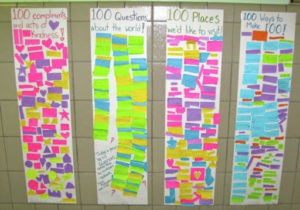
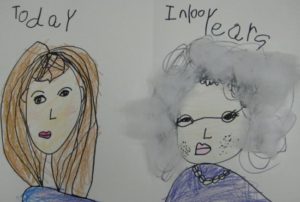 Some ideas:
Some ideas:
- 100 ways to make 100 (math!) poster.
- Poster listing 100 kind words.
- Dress up as if you are 100 years old.
- Dress up as if you lived 100 years ago.
- Poster of all things from 100 years ago.
- Snack of 100 items to share with the class (trail mix, etc.)
- Poster or bag containing 100 items.
- Endless possibilities!
Valentine’s Day
As we do not have school on February 14th, we will be celebrating Valentine’s Day on Tuesday, February 18th.
 Students will exchange Valentine’s on 2/18 and should be sure to make one for each classmate.
Students will exchange Valentine’s on 2/18 and should be sure to make one for each classmate.- Students can make a box or envelope at home to bring in to collect class Valentine Cards.
- Students may bring in special treats to share in either the AM or PM.
by Jill & Sarah | Feb 1, 2020 | 2nd/3rd Grade News
La Lectura
We have really been delving into the nitty gritty of grammar. Our learning objectives this week were:
- Read and respond to comprehension questions in complete sentences.
- Identify the subject and predicate of sentences.
- Conjugate regular verbs into the present tense 1st person and 2nd person and understand how they are different.
Please make sure your child continues to read on a nightly basis. They should be reading and answering comprehension questions from the kidsa-z.com at least 2-times each week.
Las matemáticas
Students enjoyed completing some “Zombie Division” this week to help them with our weekly learning objectives:
- Students use concrete representation such as dot paper and area models to learn multiplication facts of 6, 7, 8, and 9.
- Students make use of known multiplication facts and number properties to find other unknown multiplication facts.
- Students solve problems using related multiplication facts to find the number of items in each group.
- Students solve problems using related multiplication facts to make equal groups.
- Students learn to apply the inverse relationship of multiplication and division to write division statements from a corresponding multiplication sentence.
- Write division sentences for real-world problems.
- Express division sentences for real-world problems.
We took our Unit 6 math test on Thursday. Some students are still struggling with their math facts. Please continue to have them working on their math facts at home! Check their progress on www.mathfactspro.com They should be filling in their multiplication charts with green (some have moved on to division).

Students began their next Genius Hour project this week with step 1: make a list of possible investigations. Step 2: Choose one investigation to pursue, with teacher approval.
100th Day
This year the 100th day falls on Thursday, February 13th. We would like to ask the kiddos to create their very own 100th day project to bring in for this day. In keeping with the Genius Hour philosophy, the students can pick any way to share 100. Guidelines:
- Must equal 100. (That’s it!)
- Be prepared to tell the class about your project (in Spanish too!) What did you choose? Why did you choose it?

 Some ideas:
Some ideas:
- 100 ways to make 100 (math!) poster.
- Poster listing 100 kind words.
- Dress up as if you are 100 years old.
- Dress up as if you lived 100 years ago.
- Poster of all things from 100 years ago.
- Snack of 100 items to share with the class (trail mix, etc.)
- Poster or bag containing 100 items.
- Endless possibilities!
Valentine’s Day
As we do not have school on February 14th, we will be celebrating Valentine’s Day on Tuesday, February 18th.
 Students will exchange Valentine’s on 2/18 and should be sure to make one for each classmate.
Students will exchange Valentine’s on 2/18 and should be sure to make one for each classmate.- Students can make a box or envelope at home to bring in to collect class Valentine Cards.
- Students may bring in special treats to share in either the AM or PM.
Science
This week our learning goals were to:
- Identify basic characteristics of birds
- Classify particular animals as birds
- Compare and contrast two groups of vertebrates
- Classify particular animals as mammals
History & Geography
This week we spent most of our social studies time researching our assigned tribe. I am excited to see all of the home project ideas!
Specialists
Art with Ms. Kelly
Portraits
Every year I like to have the students work on a portrait project. The goals are:
- Observe shapes of faces
- Observe placement of eyes, nose, mouth
- Observe hair color and texture, and width of shoulders
- Look at reproductions of famous portraits such as Leonardo’s “Mona Lisa”, Paul Klee’s “Senecio,” and Picasso’s self portraits
- Draw a self-portrait
Many of these portraits have been on the bulletin board at school. All the students did a great job on this challenging art project!
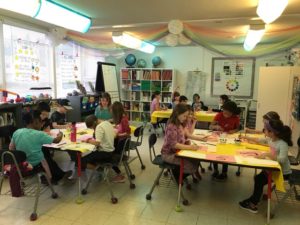 Alma Woodsey Thomas, 1891-1978, Abstract Art
Alma Woodsey Thomas, 1891-1978, Abstract Art
For Black History month coming up in February, the students learned about Alma Thomas’s perseverance as an African American woman artist of 20th century.
Some facts about Alma Thomas:
- She was an Art Teacher for 35 years
- She became a professional artist when she retired from teaching at age 69!
- First African American artist to have solo show at Whitney Museum of art in NYC
- Michele Obama chose one of Alma Thomas’s paintings to hang in the Dining Room of the White House.
The students learned how to paint in the style of Alma Thomas by using the tips of their paint brushes. They also tried “stamping” designs with erasers dipped in paint. Many of their amazing abstract pieces are on the bulletin board at school!
Still Life with Flowers
We reviewed the book Art from her Heart about folk artist Clementine Hunter, and the students began a still life picture using paint brushes – no pencils! We’ll continue this project in February.
Music with Ms. Nadia
This month we learned all about Tchaikovsky and his ballet Swan Lake. We even learned how to spell his name! (It’s true! Feel free to quiz your second or third grader!) In a game of Two Truths and a Lie, we learned that he wrote his first song at age 4, taught music after graduating from music school, and was paid to write music for 13 years by a pen-pal he never met named Nadezhda Von Meck. Strangely, his now famous ballet Swan Lake initially flopped due to poor choreography. The show has been revised several times over the past hundred years, each incorporating its own spin while paying tribute to the original. We watched a few scenes from the ballet, including a waltz from the first act and the Dance of the Swans. It’s amazing how the ballerinas all dance in sync with one another! Each act has a different feel as it tells a different part of the story, which we drew out in an active listening exercise. Each movement is full of contrasts (happy and sad, high and low, loud and quiet, day and night, etc.). We can find these contrasts in the world around us!
We have also been learning about meter, another term for time signatures. Students are now familiar with 2/4 time (two quarter notes in a measure), 3/4 time (three quarter notes in a measure), 4/4 time (four quarter notes in a measure), and the rare 5/4 time (five quarter notes in a measure). We have played rhythm games, echo games, and danced the waltz (a dance in 3/4 time). Other highlights include ballerina puppet hangman and percussion instrument challenges.
by Jill & Sarah | Jan 25, 2020 | 2nd/3rd Grade News
La Lectura
We have been focusing on our grammar and the parts of speech that make up our sentences. Last week we worked with nouns. This week we are focusing on verbs. All the students are comfortable with the concept of verbs but they can also be a bit tricky in Spanish. Spanish verb endings change according to the noun/pronoun. This week we added a verb conjugation section to our Spanish journals and conjugated a bunch of verbs into the first person singular. This way they can really see the consistency/pattern.
We read a great story this week and really focused on answering comprehension questions in complete sentences. Students are finding this easier each week, as practice makes us all feel more comfortable.
Students received their new spelling lists on Tuesday. Their test will be Friday, January 31st.
Las matemáticas
Our objectives this week were:
- Learn to apply the inverse relationship of multiplication and division to write division statements from a corresponding multiplication sentence.
- Understand related multiplication and division facts.
- Divide to find the number of items in each group.
- Divide to find the number of groups.
- Write division sentences for real-world problems.
- Express division sentences for real-world problems.

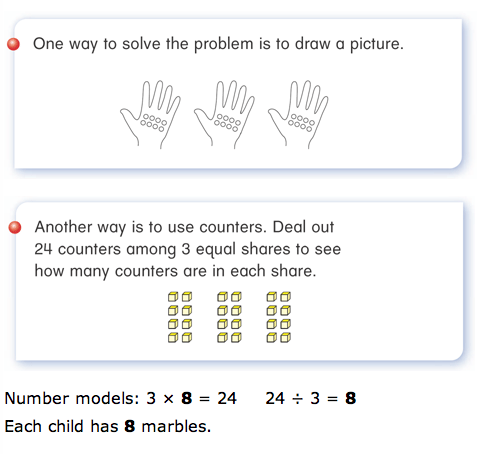

The last of the genius hour projects were presented on Friday. They were fantastic! We will begin our next GH project next Friday. One of the questions each student answered after their presentation was, “What would you do differently next time?” I can’t wait to see what comes next!
-
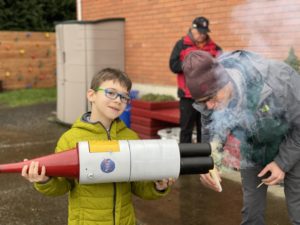
-
How do rockets work?
-
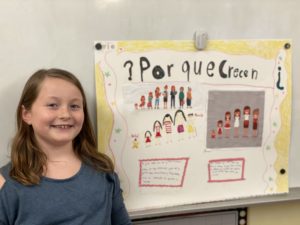
-
Why and how do we grow?
-
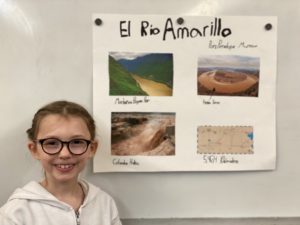
-
Why is the Yellow River yellow and more about it?
-
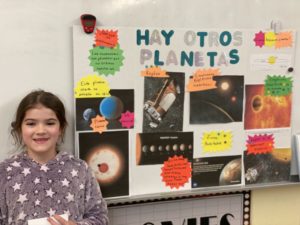
-
Are there other planets and planetary systems out there?
-
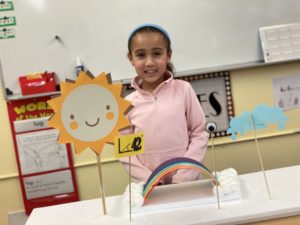
-
How are rainbows formed?
-
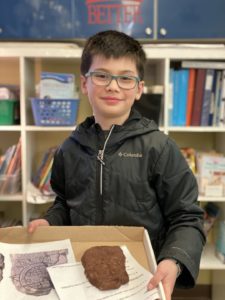
-
What’s the oldest map?
-
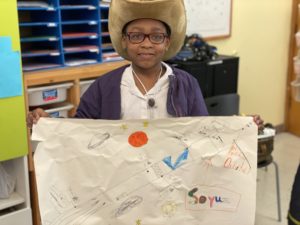
Social Studies
This week each student was assigned a Native American tribe in which they will be researching during the month of February. I hope you found the detailed informational packet and were able to review this with your student.
This week our main objectives were to :
*Describe the culture and ways of life of the peoples of the Eastern Woodlands.
*Explain why the Haudenosaunee Confederacy was important.
*Identify reasons for the struggle between Native Americans and Europeans Americans.
*Understand the meaning of the following vocabulary: Landscape, stalk, wigwam, longhouse, ebb sachem, and peace pipe.
Science:
This week our goals were to :
*Observe and describe basic characteristics of an animal.
*Explain that scientists classify animals by common or shared characteristics.
*Identify basic characteristics of reptiles.
*Classify particular animals as reptiles.
*Compare and contrast two groups of vertebrates.
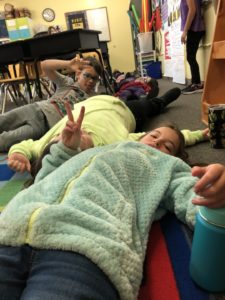
The length of Anna Anaconda, equal to 6 students. Basically the length of our classroom.
by Jill & Sarah | Jan 18, 2020 | 2nd/3rd Grade News
La Lectura
We really focused on grammar this week, specifically Nouns/ sustantivos. In our journals we made lists of animals, people, places and things. We identified the different types of nouns in our reading this week and in sentences. We created our own sentences and identified the types of nouns we used.
Bringing their attention to the type of words we use in sentences, and the purpose they serve, will help the students in their reading comprehension but especially in their writing. Students were once again asked to respond to reading comprehension questions this week using complete sentences.
Students took their spelling test on Friday and did a great job!
Las matemáticas
We have now worked through all the multiplication facts through 9. More students are passing their daily timed tests! If your child is stuck on a fact family for more than a couple days, please have them drilling at home with flashcards and www.mathfactspro.com (each student has their own account).
 I was so incredibly happy and impressed with the Genius Hour presentations on Friday. All the presenters did a fantastic job. They clearly were prepared and knew their topics. So proud!
I was so incredibly happy and impressed with the Genius Hour presentations on Friday. All the presenters did a fantastic job. They clearly were prepared and knew their topics. So proud!
I was also impressed with the rest of the class. They all asked their questions and gave feedback to the presenters (staying in Spanish).
-
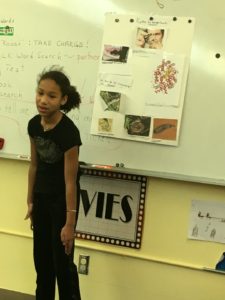
-
How do snakes make their venom?
-
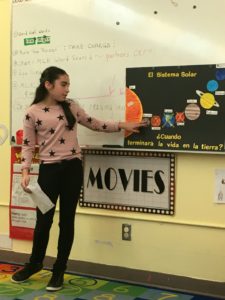
-
How long will the earth live?
-
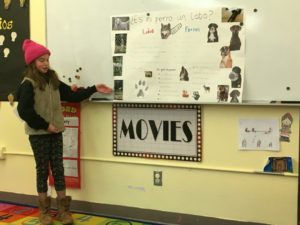
-
Are dogs part of the wolf family?
-
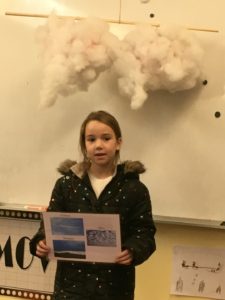
-
How are clouds formed?
-
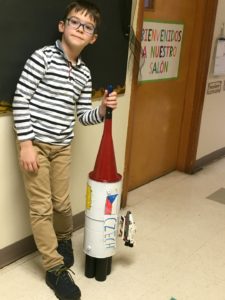
-
How do rockets take off?
Science
Our weekly science objectives were to:
*Identify a basic characteristics of fish, amphibians, reptiles, birds, and mammals
*Classify particular animals as fish, amphibians, reptiles, birds, or mammals
*Identify insects as invertebrates
*Identify insects as the most numerous group of animals that have currently been identified
*Identify basic characteristics of fish or amphibians
*Classify particular animals as fish or amphibians
*Compare and contrast two groups of vertebrates
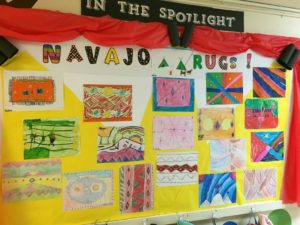 History & Geography
History & Geography
Our Social Studies objectives were to:
*Describe the ways of life of the Hopi, Zuni, Navajo, Apache, and Comanche
*Locate the Native American nations of the Southwest
*Identify and describe native American art work including hope he Kachina dolls and Navajo blankets, rugs, and sand paintings
*Understand the vocabulary: Mesa and game
Describe the ways of life of the Creek, Seminole and Cherokee
*Locate where the Creek, Seminole and Cherokee live
*Identify and describe other forms of native American art
*Understand the meaning of the following vocabulary: Confederacy, counsel, clan, and symbol
*Describe the culture and ways of life of the peoples of the eastern Woodlands
*Explain why the Haudenosaunee Confederacy was important
*Identify reasons for the struggle between Native Americans and Europeans and Americans
*Understand the meaning of the following vocabulary: Landscape, stalk, wigwam, longhouse, ebb, sachem, and peace pipe
Character Education
To continue with our Perseverance theme this week we read The Girl With a Mind For Math, The Story of Raye Montague (Hidden Figure) by Julia Mosca.
After touring a German submarine in the early 1940s, young Raye set her sights on becoming an engineer. Little did she know sexism and racial inequality would challenge that dream every step of the way, even keeping her greatest career accomplishment a secrete for decades. Through it all, the gifted mathematician persisted — finally gaining her well-deserved title in history: a pioneer who changed the course of ship design forever.
This was a wonderful book to show how Raye Montague’s entire life was a lesson in perseverance. Being told she couldn’t be an engineer because of the color of her skin and because she was female did not stop her.
by Jill & Sarah | Jan 11, 2020 | 2nd/3rd Grade News
La lectura
We have really been working on our reading strategies with some non-fiction pieces. This week we focused on answering comprehension questions using complete sentences. We are also working on using textual evidence to help us confirm our answers.
Students received their new spelling list on Tuesday. The test will be on Friday, January 17th. Each day we are working with the words in different ways to help us with their spelling and their meanings.
Las matemáticas
We continued our multiplication unit and jumped right back in with our timed tests. We have been adding to our Multiplication Strategies poster each day, as well as adding to our math journal. This week we worked through the 7s, 8s, and 9s.
 I have asked the kiddos to complete their first Genius Hour project in the next two Fridays. Here are the sign-ups:
I have asked the kiddos to complete their first Genius Hour project in the next two Fridays. Here are the sign-ups:
Friday, January 17th:Rachel, Frederick, Evelyn, Aleya, Eden, Evie, Maya
Friday, January 24th: Catalina, Elizabeth, Isabella, Penelope, Andres, Maria
Science
We had a great first week back after the break and we are enjoying our new unit: Classification of Animals. Our weekly objectives this week were to:
*Observe and describe basic characteristics of an animal
*Observe and describe basic characteristics of an animal
*Explain the plan to classify animals by common or shared characteristics
*Explain that scientist classify animals in order to study them and show relationships
*Identify cold-blooded/warm-blooded and vertebrate/invertebrate that’s important characteristic used to classify animals
*Describe basic characteristics of vertebrates/invertebrate animals
*Pacify particular animals as vertebrate or invertebrate
*Identify fish, amphibian, reptiles, birds and mammals as groups of vertebrates
*Pacify particular animals and fish, amphibians, reptiles, birds or mammals
*Identify insects as invertebrates
*Explain that there are a large number of animals that have not yet been identified
History & Geography
This week, our objectives on our new unit: Earliest Americans, were to:
*Understand that nomadic hunters may have made their way from Asia to North America by crossing a land bridge located in the Bering Strait
*Describe how Ice Age people of Beringia
*Understand the meaning of the following vocabulary: Ice Age, land bridge, sheets, hunter-gatherers, herd, mammoth, musk ox, and spear
*Explain how Americans first settlers divided into many groups and spread throughout North and South America
*Explain the impact of farming on how people lived
*Understand the meaning of the following vocabulary: river valley, mastodon, and soil
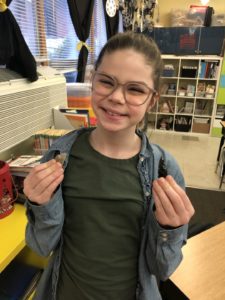
Character Education
“Be like a postage stamp, stick to something until you get there!” ~Josh Billings
During the month of January we will be learning all about Perseverance. What does it mean?
- Staying with the task and not giving up.
- Showing commitment, pride and a positive attitude in completing tasks.
- Trying again and again and again.
- Being patient and willing to work hard.
Throughout the month we will be reading several great books, discussing them and then putting our perseverance to the test with some fun activities.
by Jill & Sarah | Dec 21, 2019 | 2nd/3rd Grade News
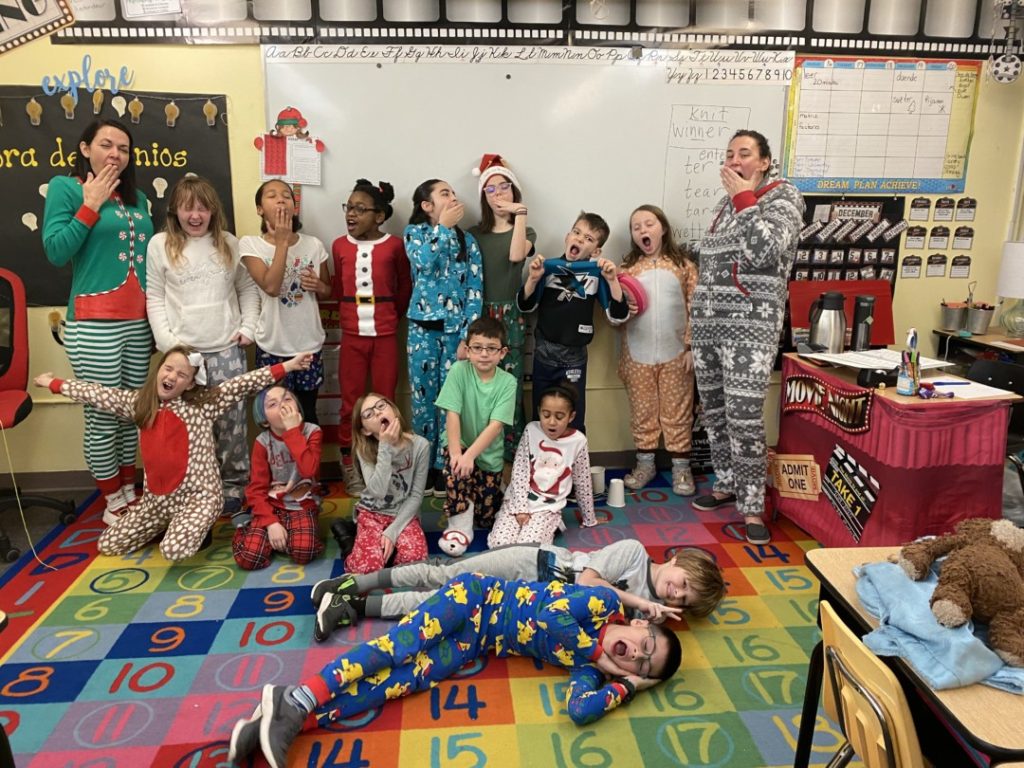
La Lectura
We read a Christmas story together, creating a vocabulary word bank last we went along. We then used this vocabulary word bank to write the ending to our own stories.
We worked on sequencing the story in order to form a correct summary. Some of the kiddos had a hard time with this. They can get better at this if they practice re-telling what they have just read. Please ask your child to tell you a summary/resumen each time they have finished their daily reading.
Students should be reading every single day. Please have them log on and read at least 3 times a week (and complete comprehension questions) at www.kidsa-z.com. This will be a great way for them to stay on top of their Spanish reading throughout the holidays.
Las matemáticas
The classroom was a MESS this week as we created arrays with hole-punchers (but it sure was fun!). We also created our own little multiplication elves.
Please see last week’s newsletter for a multiplication link.
My hope would be for every student to practice their multiplication facts in www.mathfactspro.com over the two-week vacation. How many facts can they master before we return to classes in January??
 A check list for Genius Hour presentations was sent home on Friday. Please be sure to look for this in your child’s very full backpacks!
A check list for Genius Hour presentations was sent home on Friday. Please be sure to look for this in your child’s very full backpacks!
This week we learned about RVs (the kiddos were quite interested in these!) and how plants use their food (glucose – just like us!).
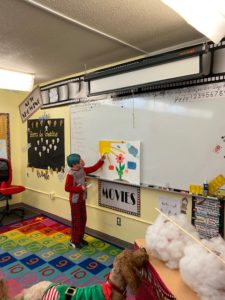
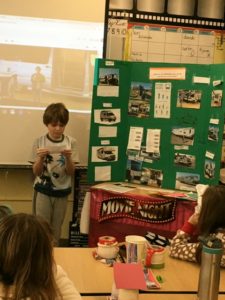
Specialists
Art with Ms. Kelly
Nutcracker Drawings
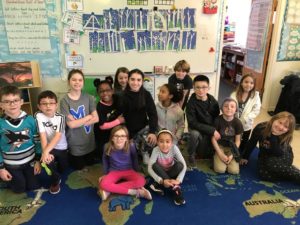 Grades 1 to 5 created some wonderful Nutcracker drawings and paintings this month! The goals were:
Grades 1 to 5 created some wonderful Nutcracker drawings and paintings this month! The goals were:
- Learn about Tchaikovsky’s Nutcracker Suite: the music, ballet and story
- Learn how to use folded paper guidelines and basic shapes to draw a nutcracker
- Add details, decorations and color, using markers, watercolors, and colored pencils
Each class did a wonderful job following directions and creating their own unique Nutcracker artwork!
The 2nd/3rd grade nutcracker artwork created a very festive bulletin board this month!
Winter Trees with Snow
The students used copies of “Sleigh Ride” sheet music to cut out tree shapes, then added torn-paper evergreens, redbirds, and white tempera paint for snow.
Thank you to Ms. Laura who helps out each week in the 2/3 class!
Everyone have a wonderful holiday!
Music with Ms. Nadia
Tis the season for jingle bells, the Nutcracker, and Frozen 2! We have had a blast jingling along to our favorite holiday songs this month, especially Jingle Bells. As we continue in learning about the orchestra, we have discovered the beauty of ballet through Tchaikovsky’s The Nutcracker. Not only have we listened to the music and watched excerpts of the ballet, we also lived the story through a fun game of Toy Store. This past week was a particularly special class with a pop-up Christmas tree advent calendar! Each student had an opportunity to crack open a tiny door and decorate the tree with an ornament. There was one catch—each student had to first answer a question about something we learned in music class so far. I didn’t go easy on them, but this group knows a lot about the orchestra! We also played a hilarious game of “Rudolf the Red-Nose Madlibs”. Here is our version of the song:
Freddy Mercury the Indigo-Nosed Pig had a very furry nose.
And if you ever saw him, you would even say it runs!
All of the other cats used to laugh and call him Christmas Sweater.
They never let poor Nadia join in any dog basketball.
Then one stinky Christmas eve, Ariana Grande came to say,
“Freddy Mercury with your mouth so slimy, won’t you guide my teleport tonight?”
Then how the reindeer loved him as they shouted out with depressed!
Freddy Mercury the Indigo-Nosed Pig, you’ll go down in fieldtrip!
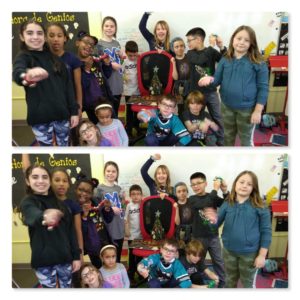
I’m enjoying this class’s energy and enthusiasm! Other highlights include a Simple Gifts Scramble game, learning about 16th notes, taking turns playing my ukulele, and Bop It: Live with percussion instruments (clave it, ding it, shake it!)!
Merry Christmas and a Musical New Year!
by Jill & Sarah | Dec 14, 2019 | 2nd/3rd Grade News
La Lectura
This week we read a whole-group complimentary story to the reading groups from last week. We reviewed our reading strategies and then implemented them as we read as a whole class.
We then reviewed our reading strategies again, before receiving a new book and reading through independently (the first time). Here’s what that looked like:
- Receive new book.
- Do a picture walk through, to give a general idea of what the book might be about.
- Read independently. (Underline unfamiliar words.)
- Re-read with a partner, discuss and underline the main idea on each page.
- Re-tell the story to a new partner, siting important events from the story.
Next week we will continue with this book with these steps:
- Read the book as a whole group.
- Discuss vocabulary (and add this vocabulary to our language arts journals).
- Identify any inferences we needed to make throughout the story.
- Identify main idea of the book.
- Identify main characters and describe their personalities.
Las matemáticas
This week we continued working on Bar Models. We have also been working to solidify our math facts with flashcards, mathfactspro.com, and timed tests. Next week we will move on to our introduction to Multiplication:
Math in Focus Chapter 6: Multiplication Tables of 6, 7, 8, & 9
Objectives for December and January:
- Use multiplication properties.
- Understand multiplication by using array models.
- Understand multiplication by using area models.
- Understand multiplication by using number lines.
- The number line is used to skip-count by factors from 2 to 10.
- Use various models & strategies to multiply
- Use array models to multiply
- Use area models to multiply
- Recognize odd & even numbers
- Use number lines
- Divide
- Solve real-world problems including multiplication & division facts.
- Practice multiplication facts of 6, 7, 8, & 9.
- Divide to find the number of items in each group.
- Divide to find the number of groups.
- Understand related multiplication and division facts.
- Thinking skill:
- Identifying patterns and relationships
- Problem-Solving Strategies:
- Work backward
- Use guess & check
Key Visuals/Activities:
-
- Students use concrete representation such as dot paper and area models to learn multiplication facts of 6, 7, 8, and 9.
- Students make use of known multiplication facts and number properties to find other unknown multiplication facts.
- Students solve problems using related multiplication facts to find the number of items in each group.
- Students solve problems using related multiplication facts to make equal groups.
- Students learn to apply the inverse relationship of multiplication and division to write division statements from a corresponding multiplication sentence.
- Write division sentences for real-world problems.
- Express division sentences for real-world problems.
Multiplication Games
Science
Our weekly objectives were to:
*Recall the sense of hearing and the corresponding sensory organ
*Identify sound as a form of energy that travels in waves
*Describe how sound waves travel in different mediums
*Identify sources of sound
*Compare and contrast light and sound
*Describe how the intensity and frequency of vibrations affects the qualities of a sound
*Identify the parts of the body that create the human voice
*Explain how the human voice is produced and is able to make a wide range of sounds
History & Geography
Our objectives this week were to:
*Identify the role of a Viking storyteller
*Recognize the Vikings as the first Europeans to cross the Atlantic Ocean to Newfoundland, Canada
*Understand that much of what we know about the Vikings has been learned it from archaeological discoveries
*Identify leaf Eriksson, also known as “Leif the Lucky”
*Understand the meaning of the following vocabulary: pasture
*Recognize the Vikings’ achievements as explorers
*Identify Eric the Red and explain why he traveled from Iceland to Greenland
*Understand the meaning of the following vocabulary: feast, hush, and banish
by Jill & Sarah | Dec 7, 2019 | 2nd/3rd Grade News

La Lectura
This week we identified and wrote about characteristics of main characters. We also identified author’s purpose.
Students did a great job writing about their Thanksgiving holiday in their Spanish journal. We are working on having complete thoughts, noun-verb agreement, and providing details. After students wrote, they shared their writing with a partner who then needed to illustrate it. This helped the students to recognize if they had provided sufficient text for imagery.
Students have been working with their new spelling list. The spelling test will be next THURSDAY, December 12th.
 We did a quick brainstorming session of what makes a good presentation and what specifically should be included in their genius hour presentations, when they are ready. We had our first student share his genius hour project with the cl
We did a quick brainstorming session of what makes a good presentation and what specifically should be included in their genius hour presentations, when they are ready. We had our first student share his genius hour project with the cl
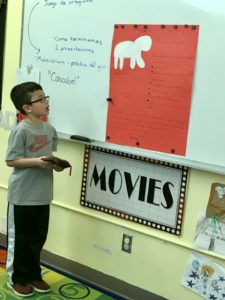
ass this week. This has been a great opportunity for the to share their own interests with their classmates while giving an oral presentation. Classmates were asked to provide critique: what were some things that were done really well and what was one thing that could be improved upon?
We learned all about the making of stuffed animals!
Las Matemáticas
We continued working with bar models to represent addition and subtraction problems. We are noticing that our biggest hurdle is copying the problems correctly! We talked about checking our numbers before completing the math.
We are also seeing how fluently knowing our math facts really affects our ability to solve math problems. We have been taking daily math facts quizzes for quite some time but are seeing some kiddos have stalled out. To help encourage progress in fact fluency we introduced www.mathfactspro.com as another way to help practice facts. (We are retiring Prodigy for now. Please have your kiddo practicing their addition and subtraction facts with either flashcards or this online program.)
We will soon be moving into multiplication where knowing addition and subtraction will be used as well. Please help encourage your kiddos to get all these subtraction and addition facts down before moving on to multiplication.
Science
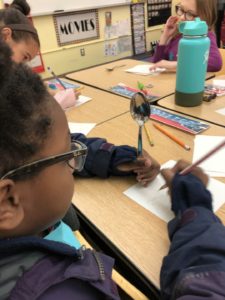
Learning about concave and convex. Photo by Frederick
This week we started a new science unit on light and sound. Our main objectives were to:
* Recall the senses and their corresponding sensory organs
* Recall the senses and their corresponding sensory organs
* Identify the sun as earths main source of light and name other light sources
* Identify light as a form of energy that travels in waves
* Explain why light is so important
* Describe how the light waves travel in different mediums
* Explain how shadows are formed
* Explain how late is absorbed, reflected, or transmitted
* Describe the three types of mirrors: plane, concave, and convex
* Compare and contrast the terms concave and convex
History & Geography
Our new unit is on the Vikings. Our objectives this week were to:
*Identify and locate Scandinavia, the Vikings’ homeland, on a world map
*Describe the Vikings’ way of life at home and at sea
*Describe the purpose of runes
*Understand the meaning of the following vocabulary: raid, fjord, blacksmith, jarl, plunder, ransom, and rune
*Recognize that in addition to being skilled sailors and traders, the Vikings were also fierce and terrifying Raiders
*Explain the original of the word berserk
*Understand the meaning of the following vocabulary: oarsman, berserker, tow, cargo, and goblet
Wednesday Specials
Character Education
This week we were so grateful to have Dr. Torres join us for a special lesson. We brainstormed emotions and read a lovely book “Moody Cow Meditates”. We then made our own Mind Jars. We needed to imagine that this jar is our mind. When we are in a calm state, we can think clearly, and make good decisions. We imagined that the glitter is anger, worry, fear, etc – when those feelings hit, we may feel unbalanced or our thoughts may feel jumbled up. Our mind is cloudy and we can’t think as clearly. If we are still, slow down and take deep breaths our thoughts can settle and we can see more clearly and make better decisions.
Music with Ms. Nadia
During the month of November, we learned all about the Orchestra! This magical group of musicians led by a conductor is composed of four sections: strings, wood winds, brass, and percussion. Each section has their own distinct sound and their own special place on the stage, which we had the opportunity to sketch. Each instrument has its own range (set of notes its able to play). We learned that the bigger instruments have lower ranges. For example, double basses sound low while violins sound high. We had fun learning through games, posters, and drawing activities. Bryce even brought his own violin to class one day, which we compared to my ukulele. (It’s about the same size!) We also used a wonderful online resource which allowed us to listen to each instrument individually. Check it out at www.mydso.com/dso-kids/learn-and-listen/instruments !
As we learned about the orchestra, we continued to learn the song Simple Gifts, which appears in the seventh movement of Aaron Copland’s Appalachian Spring. Through listening, we learned how to identify when each section is playing. It is a particularly great example of when each section of the orchestra is featured with its own shining moment. “Guess the orchestra section” is a fun game to play at home!













 Conjugate verbs into the 3rd person singular, present tense.
Conjugate verbs into the 3rd person singular, present tense. Multiply ones, tens, and hundreds mentally.
Multiply ones, tens, and hundreds mentally.
 All students successfully logged into their Google accounts and are excited about their new email! Here are the guidelines we discussed in class:
All students successfully logged into their Google accounts and are excited about their new email! Here are the guidelines we discussed in class:
 Some ideas:
Some ideas: Students will exchange Valentine’s on 2/18 and should be sure to make one for each classmate.
Students will exchange Valentine’s on 2/18 and should be sure to make one for each classmate. Alma Woodsey Thomas, 1891-1978, Abstract Art
Alma Woodsey Thomas, 1891-1978, Abstract Art














 History & Geography
History & Geography



 Grades 1 to 5 created some wonderful Nutcracker drawings and paintings this month! The goals were:
Grades 1 to 5 created some wonderful Nutcracker drawings and paintings this month! The goals were:


